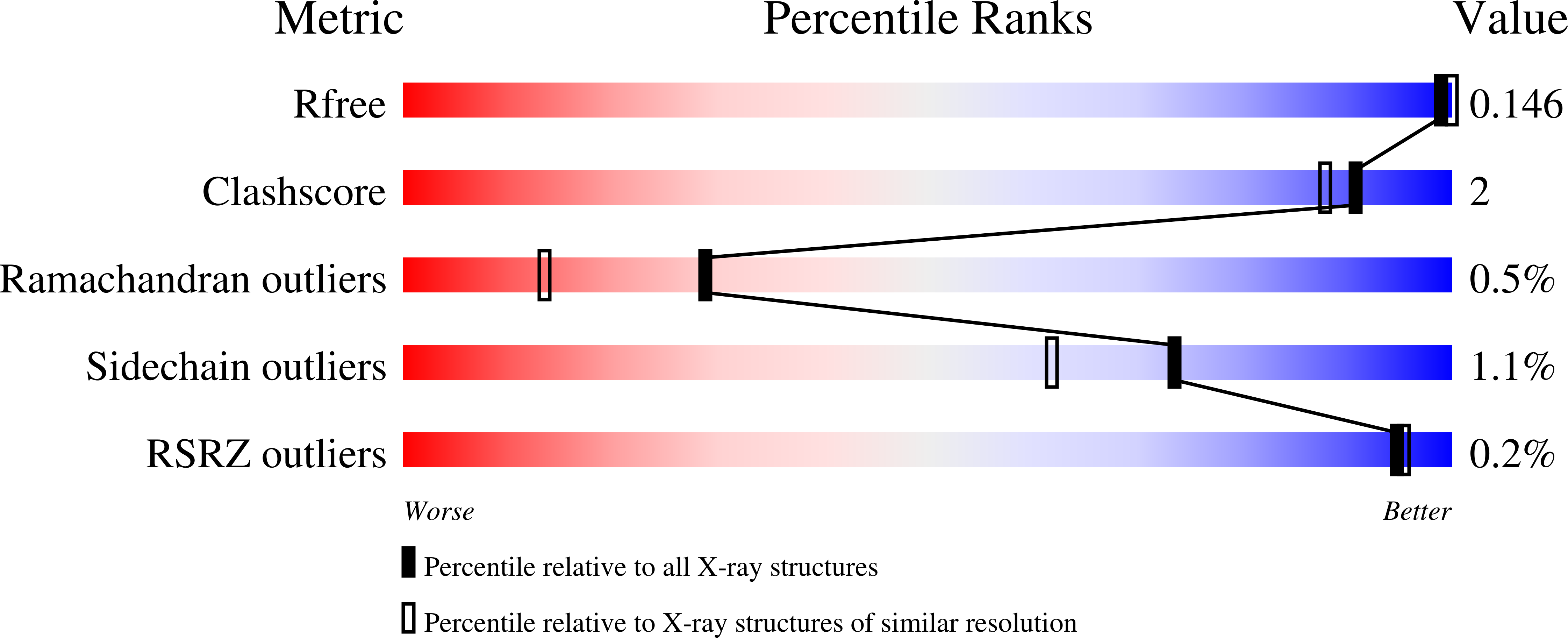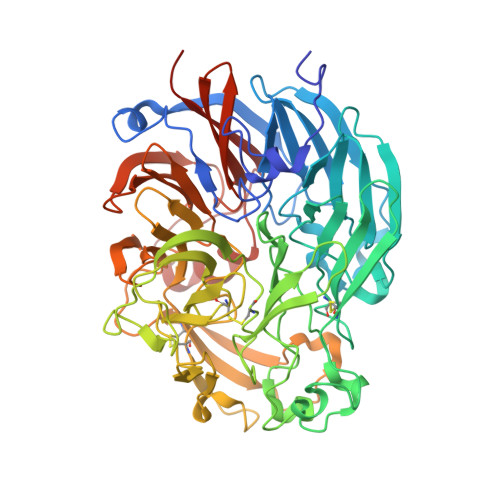Crystal Structure of Quinone-Dependent Alcohol Dehydrogenase from Pseudogluconobacter Saccharoketogenes. A Versatile Dehydrogenase Oxidizing Alcohols and Carbohydrates.
Rozeboom, H.J., Yu, S., Mikkelsen, R., Nikolaev, I., Mulder, H.J., Dijkstra, B.W.(2015) Protein Sci 24: 2044
- PubMed: 26440996
- DOI: https://doi.org/10.1002/pro.2818
- Primary Citation of Related Structures:
4CVB, 4CVC - PubMed Abstract:
The quinone-dependent alcohol dehydrogenase (PQQ-ADH, E.C. 1.1.5.2) from the Gram-negative bacterium Pseudogluconobacter saccharoketogenes IFO 14464 oxidizes primary alcohols (e.g. ethanol, butanol), secondary alcohols (monosaccharides), as well as aldehydes, polysaccharides, and cyclodextrins. The recombinant protein, expressed in Pichia pastoris, was crystallized, and three-dimensional (3D) structures of the native form, with PQQ and a Ca(2+) ion, and of the enzyme in complex with a Zn(2+) ion and a bound substrate mimic were determined at 1.72 ? and 1.84 ? resolution, respectively. PQQ-ADH displays an eight-bladed ¦Â-propeller fold, characteristic of Type I quinone-dependent methanol dehydrogenases. However, three of the four ligands of the Ca(2+) ion differ from those of related dehydrogenases and they come from different parts of the polypeptide chain. These differences result in a more open, easily accessible active site, which explains why PQQ-ADH can oxidize a broad range of substrates. The bound substrate mimic suggests Asp333 as the catalytic base. Remarkably, no vicinal disulfide bridge is present near the PQQ, which in other PQQ-dependent alcohol dehydrogenases has been proposed to be necessary for electron transfer. Instead an associated cytochrome c can approach the PQQ for direct electron transfer.
Organizational Affiliation:
Laboratory of Biophysical Chemistry, Groningen Biomolecular Sciences and Biotechnology Institute, University of Groningen, Groningen, The Netherlands.



















